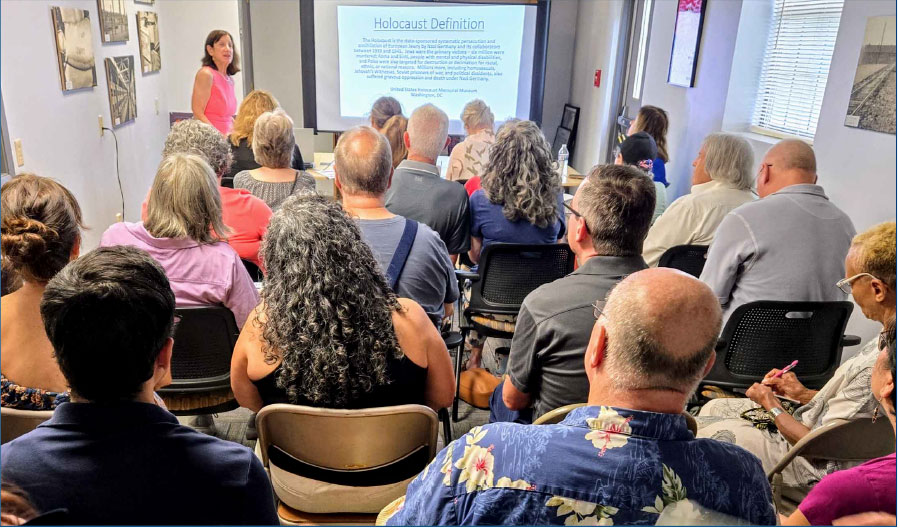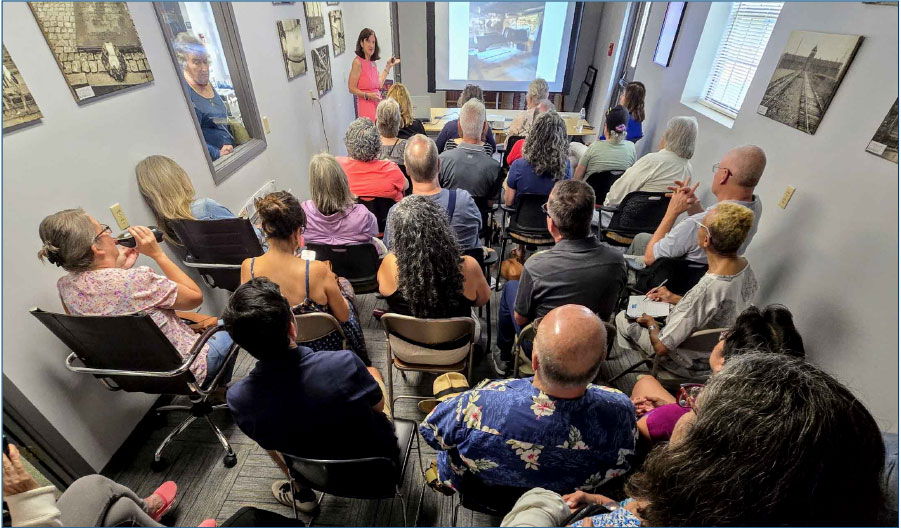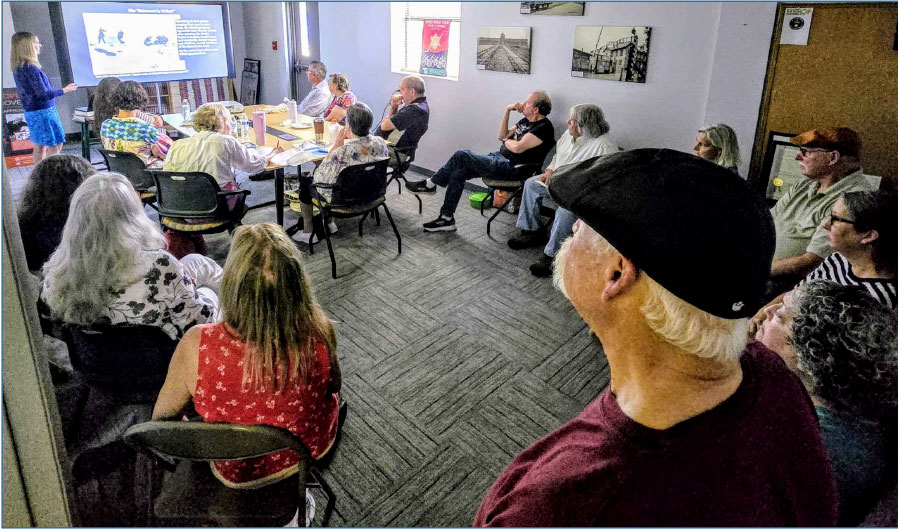In the month of July, the Holocaust Education Council (HERC) hosted two Lunch and Learn presentations, both were well attended. We want to thank participants for their interest in these presentations and we encourage you to keep an eye open for more upcoming educational programs.
On July 10th, HERC’s Education Director, Lauren Crampton, introduced the topic of the Origins of Nazi Genocide. Her presentation traced the history of mass killing and death in Nazi Germany from 1933 to 1945. She showed visual examples of the propaganda and ideology in the 1930s that facilitated the passing of the Sterilization Law in 1933 to prevent disabled German citizens from procreating. This ultimately led to the actual killing of disabled and mentally ill Germans as a part of the T4 Program in 1939 that legalized mass killing of groups of people determined to be unfit for life and paved the way for the targeted killing of the Jewish population in the Holocaust. The presentation focused on the often-overlooked role of the Einsatzgruppen and German police battalions in the Holocaust in Eastern Europe. These mobile killing units, supported by local collaborators, followed the German army into the Soviet Union in 1941 and executed over a million Jews in mass shootings, often in forests, ravines, and fields near their homes. She also discussed Operation Reinhard, the Nazi plan to exterminate Polish Jews through the use of death camps Belzec, Sobibor, and Treblinka. These camps, unlike concentration camps, were built solely for murder, where victims were gassed upon arrival, resulting in the deaths of approximately 1.7 million Jews between 1942 and 1943. The presentation emphasized how these two methods, mobile shootings and industrialized killing, killed the majority of victims of the Holocaust in Eastern Europe. She concluded the presentation by providing Raphael Lemkin’s definition of genocide, which was coined in his 1944 book, Axis Rule in Occupied Europe. Lemkin defined genocide as “the destruction of a nation or an ethnic group.” He built the word, he said, “from the ancient Greek word genos (race, tribe) and the Latin cide (killing).” He wrote, “Genocide is directed against the national group as an entity, and the actions involved are directed against individuals, not in their individual capacity, but as members of the national group.” Afterward, she welcomed questions, comments, and fostered discussion among participants.

On July 24th, HERC’s Executive Director Barbara Goldstein, who recently visited Poland with the March of the Living trip, which was founded in 1988 as the world’s preeminent experiential program aimed at teens, young adults and adults about the importance of Holocaust remembrance. The trip also commemorated the 80th anniversary of Liberation, with 80 survivors of the Holocaust. Barbara presented her experiences with a photojournalistic view of her journey of Poland. Through a series of photos, she demonstrated the importance of the preservation of memory. The 1.5 mile march from the Auschwitz concentration camp to the Birkenau death camp reflected the path prisoners were forced to walk 80 years ago. The President of Poland and the President of Israel led the march, followed by 80 Holocaust survivors. Featured in her presentation, Barbara also shared her own personal recollections of the feeling of the event, while watching multi-generations learn about the Holocaust and the importance to “Never forget.” Interactive discussion closed out the presentation and those conversations opened important dialogue. The questions helped to further HERC’s understanding of the needed education within the schools and community to support our mission.


